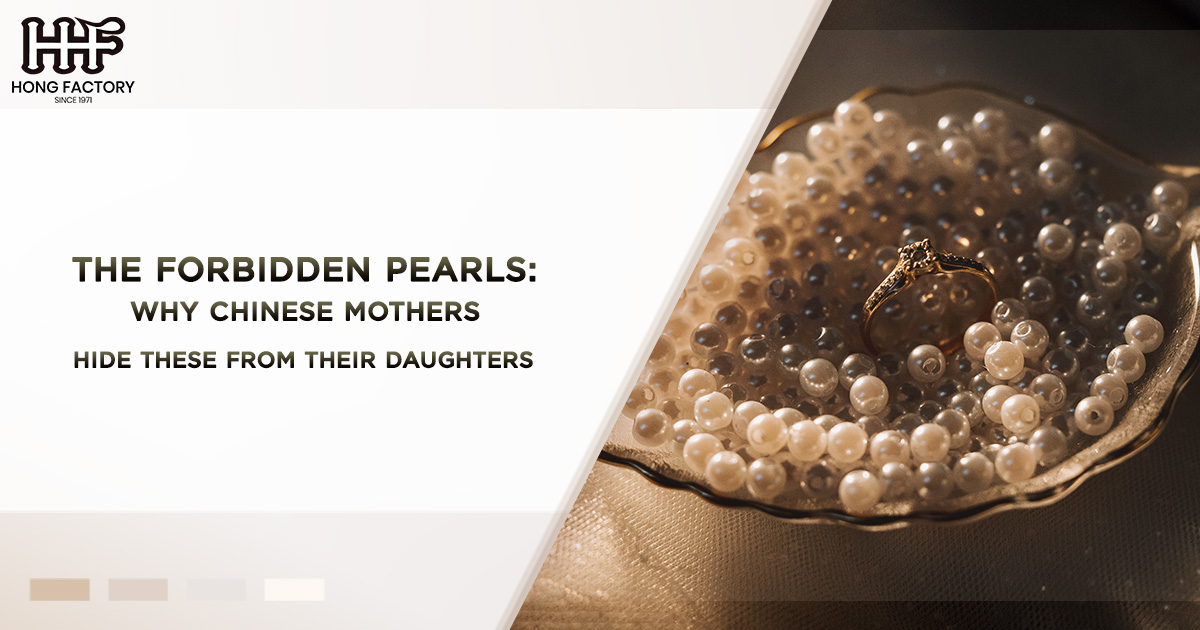
In Chinese culture, pearls have long been associated with beauty, purity, and wealth. These lustrous gems, formed within the shells of oysters, hold a special place in the hearts of many, symbolizing elegance and grace. However, alongside their positive connotations, pearls also carry a set of cultural beliefs and superstitions that can lead some Chinese mothers to exercise caution when it comes to their daughters and pearls. This article explores the complex relationship between Chinese traditions, pearl superstitions, and the cultural beliefs that shape family customs regarding these precious gems.
The Symbolism of Pearls in Chinese Culture
Beauty and Prosperity
Traditionally, pearls are celebrated in Chinese culture as symbols of beauty and prosperity. They are often used in jewelry, signifying wealth and social status. Pearls have been adored by emperors and high-ranking officials throughout history, often being presented as gifts to signify favor and respect. This admiration continues today, with pearls being a popular choice for brides and special occasions.
Purity and Femininity
In addition to their association with beauty, pearls also embody purity and femininity. The soft, lustrous quality of pearls has made them a symbol of a woman’s grace and gentleness. Many believe that wearing pearls can enhance a woman’s charm and attract good fortune, reinforcing the notion that these gems are an essential part of a woman’s adornment.
The Superstitions Around Pearls
Despite their beauty and positive symbolism, pearls are shrouded in a veil of superstitions and beliefs that caution young women in particular. Some of the main concerns include:
1. Tears and Sadness
One of the most prominent superstitions surrounding pearls in Chinese culture is the belief that they are linked to tears and sadness. It is said that pearls are formed from an irritant within an oyster, which generates a natural defense mechanism—something akin to a form of heartbreak. Many mothers warn their daughters that wearing pearls may bring them sorrow or heartache, especially in relationships. This belief reflects a deep-rooted concern among parents about the emotional well-being of their daughters.
2. An Omen for Relationships
In some families, pearls are viewed as an omen that can foreshadow troubled romantic relationships. The belief is that wearing pearls, especially during significant life events such as weddings or engagements, may lead to potential discord or dissatisfaction in marriages. As a result, many mothers choose to hide pearls from their daughters, fearing that these effects may manifest in their daughters’ romantic lives.
3. Symbol of the Unattainable
In addition to the fears associated with relationships, pearls are often seen as a metaphor for unattainable beauty or perfection. Mothers may worry that their daughters will strive for an ideal that is not only unrealistic but potentially damaging to their self-esteem and personal growth. This perspective can lead to the notion that pearls should be reserved for special occasions rather than a daily adornment.
The Role of Family Customs and Cultural Beliefs
Protectiveness of Mothers
Chinese mothers often feel a strong sense of protectiveness toward their daughters, which is reflected in various family customs. This protectiveness extends to not wanting their daughters to encounter potential heartache or disappointment that can arise from romantic relationships. By discouraging the use of pearls, mothers aim to shield their daughters from the emotional turmoil that they believe these gems may attract.
The Influence of Generational Wisdom
Pearl superstitions are often passed down through generations, becoming ingrained in family customs. These beliefs are part of the collective wisdom of families, where experiences, stories, and lessons learned shape the practices surrounding pearls. As daughters grow, they may internalize these beliefs, creating a generational cycle of caution and superstition. This dynamic emphasizes the strength of familial bonds and the influence of traditional wisdom on contemporary practices.
Balancing Tradition and Modernity
In modern Chinese society, there exists a tension between traditional beliefs and contemporary values. While many young women appreciate the aesthetic value of pearls and their symbolic meaning, they may also question the superstitions attached to them. This evolution in perspectives may lead to discussions between mothers and daughters about the significance of pearls, and whether the associated beliefs hold any relevance in today’s world.
The Impact of Cultural Beliefs on Young Women
Self-Perception and Identity
The superstitions surrounding pearls can have a profound impact on the self-perception and identity of young Chinese women. Being told that pearls are linked to tears or sadness may lead some to view themselves as harbingers of misfortune or disappointment. This can create a conflict between internal desires for beauty and external pressures from cultural beliefs, ultimately shaping their views on femininity and self-worth.
Embracing or Rejecting Tradition
As young women navigate their identities, they often face choices regarding tradition. Some may choose to embrace these cultural beliefs, feeling connected to their heritage and family customs. Others, however, might reject the notion that pearls carry any negative connotations, seeking to create their own meanings and narratives around these precious stones. This divergence can lead to a rich dialogue about personal beliefs versus inherited customs, contributing to a broader understanding of cultural identity.
Redefining Pearls in Modern Times
A New Perspective on Pearls
As Chinese society continues to evolve, the meanings attached to pearls are being reassessed. Many young women are reclaiming pearls as symbols of strength and self-expression, rather than as embodiments of sorrow. By redefining pearls in this way, they actively challenge the superstitions that have previously influenced their lives, transforming these gems into empowering symbols.
Pearls as Personal Tokens
In today’s context, pearls are increasingly viewed as personal tokens of love and achievement, rather than mere symbols of relationships. Many women choose to wear pearls as a reminder of their individuality and accomplishments, using these stones to celebrate their journeys rather than as a reflection of their romantic status. This shift in perspective offers a pathway to enjoying pearls without the weight of traditional superstitions.
The Role of Education and Awareness
Education plays a crucial role in dispelling myths and superstitions surrounding pearls. As young women learn more about the history and significance of pearls, they can cultivate a balanced view that incorporates both traditional knowledge and contemporary values. This awareness empowers them to make informed choices regarding how they engage with pearls and the symbolism they hold.
Conclusion
The relationship between Chinese mothers and pearls reflects a complex interplay of cultural beliefs, family customs, and generational wisdom. While pearls symbolize beauty, purity, and wealth, they are also intertwined with superstitions that many consider to be protective. By hiding these gems from their daughters, mothers seek to shield them from perceived emotional turmoil and heartache.
However, as society evolves, so too do the interpretations of these beliefs. Young women are increasingly reclaiming pearls as symbols of strength and individuality, challenging the narratives that have surrounded these precious stones. By bridging the gap between tradition and modernity, a new understanding of pearls can emerge-one that honors heritage while embracing personal empowerment.
In navigating the delicate balance between cultural beliefs and personal identity, Chinese mothers and their daughters can foster open dialogues about the significance of pearls, allowing for a richer appreciation of both tradition and modern values. Ultimately, the story of the forbidden pearls is not just about superstition; it’s about love, protection, and the journey toward self-discovery in a rapidly changing world.










